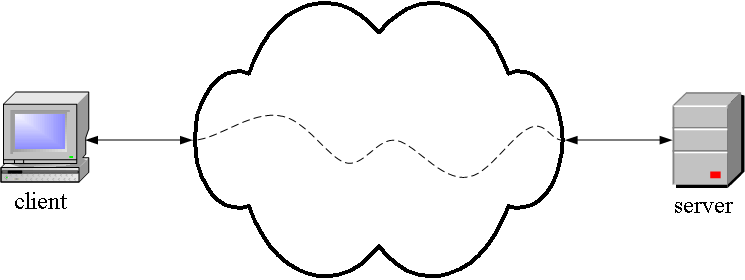
Clients and servers communicate with each other across the Internet or any other network. (Client-server applications are also common on local area networks). The client requests some service and the server performs it (or returns an error message if there is a problem).

The Web is a familiar client-server application. To see a Web page, you run a Web client like Internet Explorer or Firefox. When you enter a URL and hit enter, the client encloses it in a Get message which it sends across the network to a Web server. If the document is on that Web server, it sends it back to the client. If not, it sends an error message (formatted as a Web page). When the client receives the page (pr error message), it formats and displays it.
Note that when information is transferred from a server to a client as in this case, we speak of downloading and when we transfer information to a server we speak of uploading.
Surfing the Web with a Web client is a popular application, but there are many other application protocols, for example:
| Protocol | Application |
|---|---|
| HTTP, Hypertext Transfer | retrieving and viewing Web pages |
| FTP, File Transfer | copy files from client to server or from server to client |
| SMTP, Simple Mail Transport | Send email |
| POP, Post Office | Read email |
In some applications, a computer is programmed to be both a client and a server. These are called peer to peer applications.
Note that the terms "client" and "server" refer both to the computer hardware and the program it is running. When you are looking at things on the Internet, your computer is the client hardware and it is running a client program.
In the case of the Web, people also refer to a client program as a browser since it is used to browse thorough the contents of Web sites.